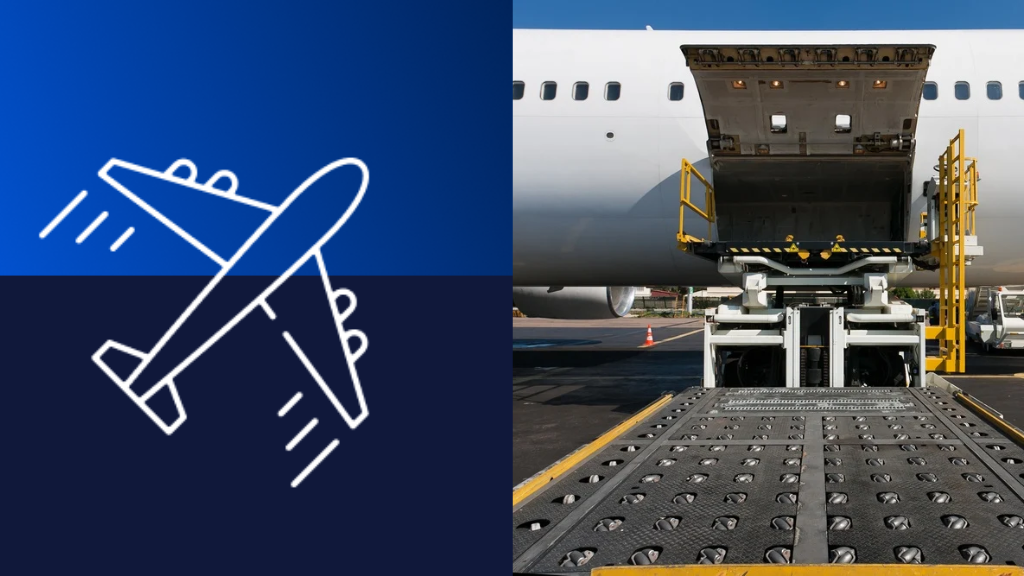Air cargo rates continue to rise from Asia and Middle East & South Asia
Air cargo rates are rising from most of the main global regions, especially from Asia Pacific and from Middle East & South Asia (MESA), strengthened by the ongoing disruptions to container shipping and elevated demand for cross-border e-commerce shipments.
Six weeks on from Lunar New Year (LNY), year-on-year (YoY) comparisons are now more meaningful and reveal some significant improvements in demand levels compared with this time last year, based on the more than 450,000 weekly transactions covered by WorldACD’s data. Overall global tonnages are up by +8%, YoY, led by a +15% rise from Middle East & South Asia and a +12% rise from Asia Pacific origin points, as disruptions to Asia-Europe container shipping – caused by the attacks on vessels in the Red Sea – and strong e-commerce demand continue to bolster air cargo demand from those regions. But there is also YoY growth ex-Africa (+10%), ex-Europe (+6%) and ex-Central & South America (+3%), with North America the only origin region to record a slight decline (-1%).
Worldwide average air cargo rates are down, YoY, by -10%, but they remain significantly above pre-Covid levels (+36% compared to March 2019).
Overall worldwide air cargo capacity continues to be significantly up on last year’s levels (+9%), most notably ex-Asia Pacific by +19%, and ex-Central & South America by +12%.

Middle East & South Asia growth
As WorldACD has highlighted in recent weeks, one of the big ongoing stories at the moment is the continuing surge in demand and rates from MESA origin points. With tonnages up +15%, YoY, and capacity up by +6%, it’s the only major origin region to also record YoY increases in average rates, which are up by +29%, YoY, in weeks 11 and 12 combined, as well as increasing by +10% compared with the previous two weeks.
As also recently highlighted, certain Asia-Europe sea-air hubs such as Dubai, Colombo and Bangkok have experienced exceptionally high air cargo demand to Europe since the start of this year, in large part linked to the disruptions to Asia-Europe container shipping caused by the attacks on vessels in the Red Sea.
Fresh analysis this week indicates that Dubai-Europe tonnages remain particularly strong, up by +162% in weeks 11 and 12, combined, compared with their level this time last year, and Bangkok-Europe tonnages remain significantly elevated, up by +46%, YoY in weeks 11 and 12.
Also, Colombo-Europe tonnages were up +22%, year on year (YoY), in weeks 11 and 12. That is similar to week 10 (+24%), but only half the level of week 9 (+38%) and a quarter of the level the three weeks before (more than +80%).
Analysis last week by WorldACD also revealed that the recent disruptions to container shipping have contributed to a big surge in average air freight rates from South Asia as a whole, with, currently, average rates from South Asia into Europe up by +66% for the period 1-24 March compared with December 2023, and up by +39% into North America.
India & Europe
According to the recent data analysis by Xeneta, the India to Europe air cargo market has experienced a surge in volumes since the beginning of this year. This has been largely due to demand in apparel exports from India and Sri Lanka coinciding with disruptions to ocean freight services in the Red Sea region, which saw shippers switch transportation mode to air for some of their cargo.
These increased general air cargo volumes drove overall air cargo demand in the week ending 25 February to sit 40% higher than the 2019 weekly average. While volumes have dipped slightly since then, in the week ending 24 March they remained 24% above the 2019 weekly average. With cargo capacity remaining relatively stable, the dynamic load factor from India to Europe climbed to 87% in the week ending 24 March, which is its highest level since April 2022.
Xeneta’s dynamic load factor analyzes both the volume and weight of cargo flown alongside available capacity. This increasing load factor has also distorted the usual relationship between weight breaks. Traditionally, larger cargo volumes (more weight) is charged at a cheaper per kg price than smaller volumes (less weight). However, in the week ending 24 March, the general cargo spot rate for +1000 kg reached USD 3.50 per kg, above the spot rate for +500 kg which stood at USD 3.46 per kg. The last time Xeneta observed this market condition was during the onset of the Covid-19 pandemic when the air cargo market encountered a capacity squeeze.

Red Sea conflict is impacting the market
If we want to understand the current movements in the Asia to Europe air cargo market and how this situation is likely to develop, we should look towards the conflict in the Red Sea region and the impact it has had on ocean freight container services.
Ocean containerized spot rates increased dramatically following the outbreak of conflict in the Red Sea in mid-December last year and reached a crisis peak in early February. Although ocean spot rates have fallen back by around 12% since then, on 27 March they still remained up by 310% compared to their pre-Red Sea crisis level.
The slight dip in air cargo demand since the end of February (when it hit 40% above 2019 levels) could be due ocean freight shippers now building longer transit times into their supply chains. In the early days of the crisis some shippers turned to air freight to ensure a steady supply of goods while ocean freight services adjusted to longer sailings around the Cape of Good Hope.
While a sense of normality has now returned to ocean freight, the situation is far from fully resolved and we may see some shippers continue to use air freight services for urgent cargo. Given the huge volumes involved in ocean freight shipping, even a small percentage shift in transport mode will likely keep air cargo demand and rates elevated.
Original articles: xeneta.com , worldacd
Image sources: worldacd.com / xeneta.com

